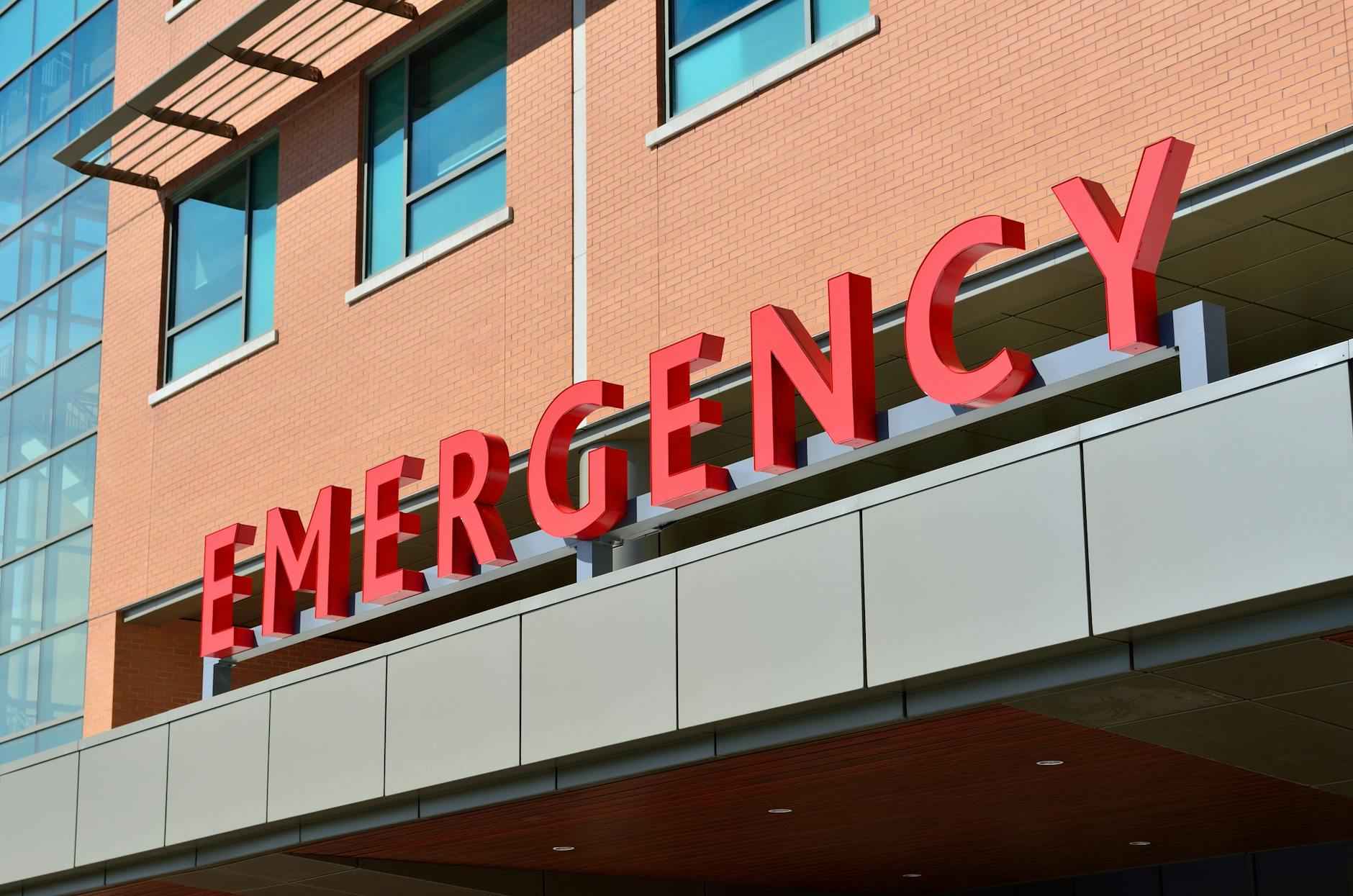This article explores the differences between walk-in clinics and emergency rooms, helping you to make the right choice when you’re in a pinch. It’s a real head-scratcher sometimes. So, like, what’s the difference between a walk-in clinic and an ER? It’s not always clear, and maybe it’s just me, but I feel like it’s super confusing for a lot of people.
Understanding the Basics
Walk-in clinics are usually for less serious issues. Like, if you got a cold or need a check-up, they might be your best bet. But, hey, don’t take my word for it! You can just walk in, no appointment needed, and that’s pretty cool, right? But remember, not every problem is a walk-in clinic issue.
- Common Ailments Treated: You can go to a walk-in clinic for stuff like minor cuts, sprains, or even a bad cough. Not really sure why people don’t know this, but it’s true!
- Cost-Effective Solutions: Walk-in clinics are often cheaper than ERs. If you’re low on cash, it might be smart to consider this option. Just saying, it could save you a pretty penny!
- Convenience Factor: These clinics usually have shorter wait times. You just walk in and get seen, which is pretty cool, right? I mean, who wants to sit around for hours?
Limitations of Walk-In Clinics
But, hold up! Walk-in clinics aren’t for everything. If you’re having a heart attack, it’s probably not the place to go. Just a thought! They might not have the resources to deal with serious issues, and that could be a problem.
When to Head to the ER
Emergency rooms are for serious stuff. If you’re bleeding or can’t breathe, that’s a big red flag. You should probably go to the ER, like, stat! ERs are equipped to handle life-threatening situations. It’s not just for fun, you know? You really need to take it seriously when you’re in that kind of pain.
- Life-Threatening Conditions: ERs can manage severe injuries and illnesses, and they got the staff to help you out.
- Advanced Medical Technology: ERs have all the fancy machines and specialists. If you need a CT scan or something, you’re gonna want to be there. Not saying it’s a party, but you get the idea.
Cost Comparison
So, let’s talk money. ER visits can be super expensive, like, ouch! If you’re on a budget, you might want to think twice before heading there. Your insurance might cover one more than the other. It’s a real headache trying to figure this out. Sometimes I wonder if they do it on purpose, you know?
| Cost Factors | Walk-In Clinic | Emergency Room |
|---|---|---|
| Average Cost | Low | High |
| Insurance Coverage | Often Covered | Varies |
| Waiting Time | Short | Long |
Hidden Fees
ERs can have hidden fees that you don’t see coming. It’s like a surprise party, but not the fun kind. Always check before you go, or you might regret it later! In the end, it’s all about being smart. Knowing when to go where can save you time and money. Just remember, your health is the most important thing, right?
Conclusion: Making the Right Choice
In conclusion, figuring out whether to go to a walk-in clinic or an ER is all about understanding your situation. Not every problem needs an ER visit, but don’t ignore serious symptoms either. It’s a balancing act, and sometimes, it feels like you’re walking a tightrope!

Understanding the Basics
So, like, what’s the difference between a walk-in clinic and an emergency room? It’s not always clear, and maybe it’s just me, but I feel like it’s super confusing for a lot of people. I mean, one minute you think you’re fine, and the next you’re like, “Am I dying?” It’s a real head-scratcher sometimes.
First off, walk-in clinics are usually meant for non-life-threatening issues. You know, like when you got a cold or maybe just need a check-up. But, hey, don’t take my word for it! I mean, who wouldn’t want to save a trip to the ER for something that’s just a little annoying, right?
- Common Ailments Treated: You can go to a walk-in clinic for stuff like minor cuts, sprains, or even a bad cough. Not really sure why people don’t know this, but it’s true! It’s like, are we living in the stone age or what?
- Cost-Effective Solutions: Walk-in clinics are often cheaper than ERs. If you’re low on cash, it might be smart to consider this option. Just saying, it could save you a pretty penny!
- Convenience Factor: These clinics usually have shorter wait times. You just walk in and get seen, which is pretty cool, right? I mean, who wants to sit around for hours? It can be so boring.
But hold up! Walk-in clinics aren’t for everything. If you’re having a heart attack, it’s probably not the place to go. Just a thought! You might wanna think twice before heading there.
Now, when you should head to the ER? Emergency rooms are for serious stuff. If you’re bleeding or can’t breathe, that’s a big red flag. You should probably go to the ER, like, stat! Seriously, don’t mess around!
- Life-Threatening Conditions: ERs are equipped to handle life-threatening situations. It’s not just for fun, you know? You really need to take it seriously when you’re in that kind of pain.
- Advanced Medical Technology: ERs have all the fancy machines and specialists. If you need a CT scan or something, you’re gonna want to be there. Not saying it’s a party, but you get the idea.
So, let’s talk money. ER visits can be super expensive, like, ouch! If you’re on a budget, you might want to think twice before heading there.
| Cost Comparison | Walk-In Clinic | Emergency Room |
|---|---|---|
| Average Cost | $100-$150 | $500-$3,000 |
| Wait Time | Short | Long |
| Severity of Conditions | Minor | Severe |
Your insurance might cover one more than the other. It’s a real headache trying to figure this out. Sometimes I wonder if they do it on purpose, you know? And let’s not even start on those hidden fees! ERs can have hidden fees that you don’t see coming. It’s like a surprise party, but not the fun kind. Always check before you go, or you might regret it later!
In the end, it’s all about being smart. Knowing when to go where can save you time and money. Just remember, your health is the most important thing, right?

When to Visit a Walk-In Clinic
Walk-in clinics are typically designed for less serious health issues. You know, like when you got a cold or just need a routine check-up, they might be your best bet. But, hey, don’t take my word for it! I mean, who am I, right? Just a new grad trying to figure it all out.
- Minor Injuries: If you sprained your ankle while playing basketball or got a small cut that needs stitches, a walk-in clinic is perfect for that. They won’t fix a broken leg, though, so keep that in mind!
- Common Illnesses: Coughs, colds, and even the flu can be treated here. Not really sure why people don’t know this, but it’s true! You don’t need to go to the ER for a runny nose.
- Vaccinations: Need a shot? Walk-in clinics often offer immunizations. It’s quick and easy, and you can be in and out before you know it.
Now, let’s talk about the cost-effective solutions. Walk-in clinics are usually cheaper than ERs. If you’re low on cash, it might be smart to consider this option. Just saying, it could save you a pretty penny! Like, I went to one for a sore throat and only paid a fraction of what an ER visit would’ve costed me. Crazy, right?
Another thing is the convenience factor. These clinics usually have shorter wait times. You just walk in and get seen, which is pretty cool, right? I mean, who wants to sit around for hours in a waiting room with a bunch of sick people? Not me, that’s for sure!
| Service | Walk-In Clinic | Emergency Room |
|---|---|---|
| Wait Time | Short | Long |
| Cost | Low | High |
| Serious Conditions | No | Yes |
But, hold up! Walk-in clinics aren’t for everything. If you’re having a heart attack, it’s probably not the place to go. Just a thought! Sometimes I wonder why people think they can just walk in for anything. Like, if you’re bleeding out, maybe go to the ER instead?
In conclusion, knowing when to visit a walk-in clinic can save you time and money. It’s all about making smart choices when it comes to your health. Just remember, your health is the most important thing, right? So, next time you feel under the weather, consider hitting up a walk-in clinic instead of the ER. You might just find it’s the best decision you’ve made all week!
Common Ailments Treated
So, like, when you think about walk-in clinics, you might not realize how many things they can actually help with. I mean, you can go to a walk-in clinic for stuff like minor cuts, sprains, or even a bad cough. Not really sure why people don’t know this, but it’s true! It’s almost like there’s this big secret about them that nobody talks about. Seriously, why do we have to wait until we’re bleeding to figure out that there’s help just around the corner?
- Minor Cuts: You know, those little nicks you get when you’re chopping veggies? Yeah, those can be treated at a walk-in clinic. No need to freak out!
- Sprains: If you twisted your ankle while trying to show off your mad basketball skills, that’s what walk-in clinics are for. Just don’t be that person who thinks they can walk it off!
- Bad Cough: Coughing up a lung? Probably a good idea to get that checked out. Walk-in clinics can help you figure out if it’s just a cold or something more serious.
But, wait! There’s more! Walk-in clinics are also great for stuff like skin rashes, ear infections, and even flu shots. It’s like a one-stop shop for all your minor health needs, but people still seem to go to the ER for these things. I mean, come on! It’s not rocket science.
| Ailment | Walk-In Clinic | ER |
|---|---|---|
| Minor Cuts | ✔️ | ❌ |
| Sprains | ✔️ | ❌ |
| Bad Cough | ✔️ | ❌ |
| Heart Attack | ❌ | ✔️ |
Now, I’m not saying that walk-in clinics are perfect or anything. They have their limits, right? If you’re feeling like you might be having a heart attack, you should probably skip the clinic and head straight to the ER. Just a thought! But for those little things that just don’t feel right, walk-in clinics can be a lifesaver. They’re like that friend who always has your back when you need a quick fix.
Also, it’s worth mentioning that you might be able to save some cash. Walk-in clinics are usually way cheaper than ER visits, which is a big deal if you’re on a budget. I mean, who wants to pay an arm and a leg for a band-aid, right? So, if you’re a college student like me, you might want to consider this option before running to the ER.
In conclusion, the next time you find yourself with a minor injury or feeling under the weather, remember that walk-in clinics are there for ya! Don’t let the confusion stop you from getting the help you need. Seriously, it’s all about making smart choices when it comes to your health. And who knows, you might just save yourself a trip to the ER!
Cost-Effective Solutions
When it comes to healthcare, especially in urgent situations, finding affordable medical options is crucial. Walk-in clinics, in particular, often provide a more budget-friendly alternative to emergency rooms. If you’re like many people, you might be wondering why this matters, but trust me, it does!
First off, let’s break it down. Walk-in clinics are typically designed to handle non-life threatening conditions. So, if you’re just dealing with a mild fever or a sprained ankle, you might wanna consider these clinics instead of the ER. It’s not rocket science, right? But, hold up! Why would you wanna pay an arm and a leg for a simple check-up? That’s just silly!
Now, let’s talk numbers. The average cost of a walk-in clinic visit can range from $100 to $200, while ER visits can skyrocket to $1,000 or more. I mean, who has that kinda cash lying around? Not me! Here’s a quick comparison:
| Service | Walk-In Clinic | Emergency Room |
|---|---|---|
| Average Cost | $100 – $200 | $1,000+ |
| Wait Time | Short | Long |
| Types of Care | Minor Issues | Serious Emergencies |
It’s also worth mentioning that walk-in clinics usually have shorter wait times. You just walk in and get seen, which is pretty cool, right? I mean, who wants to sit around for hours in a waiting room full of germs? Not me! But, maybe it’s just me, I feel like some people actually enjoy that.
But, let’s not get too carried away here. These clinics aren’t for everything. If you’re having a heart attack or something serious like that, you should definitely head to the ER. Just saying! It’s all about knowing when to seek help where. It’s like choosing between pizza and sushi, both are great, but you wouldn’t go to a sushi place for pizza, right?
Also, you gotta think about insurance. Some insurance plans cover walk-in clinics more than ER visits. It’s a real headache trying to figure this out. Like, why can’t they just make it simple? I guess that’s too much to ask. Always check your plan before you go, or you might end up paying more than you bargained for.
In conclusion, if you’re looking for for minor health issues, walk-in clinics are definitely worth considering. Just remember, your health is important, but so is your wallet! So, make smart choices and don’t let those high ER bills sneak up on you.
Convenience Factor
When it comes to choosing between a walk-in clinic and an ER, the is a big deal. I mean, who wouldn’t want to avoid long wait times? Seriously, it’s like watching paint dry when you’re stuck in an ER waiting room. Not really sure why this matters, but it’s a thing. Walk-in clinics are like the fast food of healthcare, you just walk in and get seen, which is pretty cool, right? Like, who wants to sit around for hours? No one, that’s who!
| Walk-In Clinic | Emergency Room |
|---|---|
| Shorter wait times | Longer wait times |
| Less serious ailments | Life-threatening conditions |
| More affordable | More expensive |
| Convenient hours | Open 24/7 |
So, let’s break it down a bit. You walk into a walk-in clinic, and it’s like, “Hey, I’ve got a sore throat,” and boom! You’re seen in no time. Unlike the ER, where you could be waiting for what feels like an eternity just to get a band-aid for a paper cut. I mean, come on! It’s a real head-scratcher sometimes. You’re sitting there thinking, “Is my life in danger? Or did I just stub my toe?”
- Pros of Walk-In Clinics:
- Quick service
- Less stressful environment
- More personalized care
- Cons of Walk-In Clinics:
- Limited services
- Not equipped for emergencies
But, hold on a second! Walk-in clinics ain’t for everything. If you’re having a heart attack or something, it’s probably not the place to go. Just a thought! I mean, I can’t stress enough how important it is to know when to go where. Not really sure why people don’t get this, but it’s like, “Hello? Your health is literally on the line!”
Now, let’s talk about the hours. Walk-in clinics usually have set hours, which is super convenient for those of us who like to plan our lives around Netflix binges. But if you’re like me, and you might need help at 2 AM, the ER is your best bet. It’s always open, but you might want to bring a book or something because you’ll be waiting forever.
In conclusion, the is huge when it comes to choosing between a walk-in clinic and an ER. Just remember, if you’ve got a minor issue, walk-in clinics are the way to go. But if it’s serious, don’t be a hero. Head to the ER, even if it means waiting longer than you’d like. Your health is worth it, right?
Limitations of Walk-In Clinics
So, like, walk-in clinics are super convenient, right? I mean, you just walk in and see a doc without appointment. But, hold up! They ain’t the cure-all for every little thing. Seriously, if you’re having a heart attack, you should probably skip the clinic and head straight to the ER. Just a thought!
- Not Equipped for Serious Conditions: Walk-in clinics are mainly for minor ailments. If you got a broken bone or something that looks like it came from a horror movie, you need to go to the ER. It’s not rocket science, but some people just don’t get it.
- Limited Diagnostic Tools: These clinics don’t have the fancy machines that hospitals do. If you need a CT scan or an MRI, guess what? You’re gonna be out of luck. Not really sure why this matters, but it does!
- Less Specialized Care: The staff at walk-in clinics are usually general practitioners. So, if you need a specialist, like a cardiologist or an orthopedic surgeon, you might be in for a long wait. It’s like going to a fast food place and asking for a gourmet meal. Ain’t gonna happen.
And let’s not forget about the time constraints. These clinics often have a limited number of patients they can see in a day. If you show up with something serious, you might just be sent away or told to go to the ER anyway. It’s like a bad movie plot where the hero doesn’t get help in time. Frustrating, right?
| Condition | Best Place to Go |
|---|---|
| Minor Cuts | Walk-In Clinic |
| Severe Headaches | ER |
| Flu Symptoms | Walk-In Clinic |
| Chest Pain | ER |
Also, sometimes you just don’t know what’s wrong with you. Like, you could have a simple cold, but what if it’s something serious? Walk-in clinics can’t really do much for undiagnosed issues. They might just send you away with some cough syrup and a pat on the back. Not exactly what you want when you’re feeling like death warmed over.
Another thing is, if you’re in a really bad shape, the staff might prioritize other patients who are more critically ill. You could be sitting there thinking, “Why am I waiting so long?” It’s because they gotta take care of the life-threatening situations first. So, just keep that in mind.
In conclusion, while walk-in clinics are great for those little things that don’t require a full-on emergency room, they definitely have their limitations. So, if you’re ever in doubt about your health, don’t hesitate to go to the ER. Your life could depend on it, and that’s not something you want to gamble with!

When to Head to the ER
So, like, if you’re ever in a situation where you’re not really sure if you should go to the ER or not, it can be super confusing, right? I mean, we all know that emergency rooms are for the serious stuff, but what does that even mean? It’s not just about a little scrape or a headache, folks! If you’re bleeding profusely or can’t catch your breath, that’s a huge red flag. You should probably be heading to the ER, like, right now!
- Life-Threatening Conditions
- Severe Injuries
- Advanced Medical Technology
When you think about it, ERs are really set up to deal with life-threatening situations. It’s not just a place for a fun visit, you know? If you’re feeling like you might be having a heart attack or a stroke, do not mess around! Just go!
Like, if you break a bone or get into a car accident, that’s definitely ER material. I mean, you wouldn’t want to risk it, right? Not really sure why people think they can just tough it out at home. It’s not a badge of honor!
Also, let’s not forget that ERs have all the fancy machines and specialists. If you need a CT scan or MRI, you’re gonna want to be there. It’s not like a walk-in clinic has that stuff just lying around, ya know?
But, hold on a second. Not every little thing should send you running to the ER. Sometimes, it’s just a case of a bad cold or a sprained ankle. Maybe it’s just me, but I feel like people really need to learn the difference. If you’re not sure, here’s a quick list of symptoms that definitely warrant an ER visit:
- Chest pain or pressure- Severe abdominal pain- Difficulty breathing- Uncontrolled bleeding- Sudden dizziness or confusion
Now, let’s talk about the elephant in the room: the cost. ER visits can be super expensive, like, seriously! If your insurance doesn’t cover it, you might end up in a financial mess. So, always check your insurance coverage before heading there. It’s like playing a game of “how much is this gonna cost me?” and nobody wants to lose that game!
And don’t even get me started on hidden fees. You think you’re just going in for a quick check-up, and then bam! You get hit with a bill that looks like it’s from a fancy restaurant. It’s not fun, trust me! Always ask about costs upfront, or you might end up regretting it later.
In conclusion, knowing when to go to the ER is super important. Your health should always come first, right? But also, don’t be that person who goes for every little thing. It’s all about being smart and making the right choice. So, next time you’re in doubt, just remember: if it’s serious, don’t wait! Head to the ER!
Life-Threatening Conditions
are serious issues that should never be taken lightly. When you’re in a situation where your health is at risk, it’s critical to recognize the signs that something is wrong. Not really sure why some people think they can just wait it out, but trust me, that’s not the smartest move.
- Chest Pain: If you feel pain in your chest, it could be a sign of a heart attack. You know, like the movies where people clutch their chests and fall over? Yeah, that’s not just drama.
- Severe Bleeding: If you’re bleeding and it won’t stop, you need to get to the ER. I mean, blood is kind of important, right?
- Difficulty Breathing: If you can’t catch your breath, that’s a major red flag. Don’t just sit there thinking it’ll pass. Spoiler alert: it might not.
Emergency rooms (ERs) are designed for situations like these. They’re not just places where you go for a headache or a sprained ankle. You gotta understand that ERs are equipped to handle life-threatening situations, and they take it very seriously. It’s not a joke; if you’re in that kind of pain, you should really consider going.
Now, let’s talk about the advanced medical technology that ERs have. They got all these fancy machines that can help diagnose serious conditions quickly. Like, if you need a CT scan or an MRI, you’re gonna want to be in a place that has those capabilities. Maybe it’s just me, but I feel like having access to the right tools can make a huge difference in how quickly you get treated.
| Condition | Symptoms | Action to Take |
|---|---|---|
| Heart Attack | Chest pain, shortness of breath | Go to the ER immediately! |
| Stroke | Sudden numbness, confusion | Call 911 ASAP! |
| Severe Allergic Reaction | Swelling, difficulty breathing | Head to the ER! |
Also, let’s not forget about the importance of quick response. The faster you get to the ER, the better your chances are of getting treated effectively. Delaying can lead to serious consequences, and nobody wants that. I mean, who wants to be the person who waited too long and ended up regretting it?
In conclusion, understanding when to head to the ER can literally be a matter of life or death. If you’re experiencing any of the symptoms mentioned above, don’t hesitate. It’s better to be safe than sorry, right? So, next time you’re in doubt, remember: ERs are there for a reason, and it’s not just for fun.
Advanced Medical Technology
is a big deal when it comes to emergency rooms (ERs). You know, it’s not just about having a fancy waiting room or free coffee. There’s a whole lot more going on behind the scenes that most people don’t even think about. Not really sure why this matters, but it does, trust me!
- Diagnostic Imaging: ERs are equipped with advanced imaging tools like CT scans and MRIs. These machines can help doctors see what’s wrong inside your body, like a superhero x-ray vision, but without the cape. If you’re in a serious situation, these tools are essential.
- Laboratory Services: You might not realize it, but ERs have labs right there. They can run tests on blood samples and other fluids super quickly. It’s like a science fair, but with way more at stake. If you need results fast, you want to be in an ER.
- Specialist Access: ERs have access to specialists who can come in and help. If you need a neurologist or a trauma surgeon, they can usually get one on the phone or even in person pretty quick. That’s something a walk-in clinic just can’t do.
But, hold up! Just because they have all these fancy machines and specialists doesn’t mean you should go there for everything. I mean, if you just sprained your ankle, you probably don’t need a CT scan. Maybe it’s just me, but I feel like people get confused about what’s an emergency.
| Technology | Purpose | When to Use |
|---|---|---|
| CT Scan | Detailed imaging of internal organs | Severe pain, head injuries |
| X-Ray | Bone fractures and joint issues | Suspected fractures, dislocations |
| Ultrasound | Soft tissue examination | Pregnancy, internal bleeding |
In addition to all that, ERs are also prepared for life-threatening situations. If someone’s having a heart attack or a stroke, time is of the essence. You don’t want to be waiting around in a walk-in clinic when every second counts. It’s like waiting for a bus that’s never gonna come. Seriously, don’t do that!
Now, I’m not saying that ERs are perfect. They can be crowded and the wait times can be long, especially if your issue isn’t as urgent as someone else’s. But that’s just how it is. You gotta play the waiting game sometimes. And let’s be honest, the cost can be a real kicker too. You might end up with a bill that makes you question your life choices.
So, when it comes to in ERs, it’s clear that these facilities are designed to handle serious medical issues. But, you gotta know when to use them. If you’re ever in doubt, just remember: if it’s serious, go to the ER. Otherwise, a walk-in clinic might just do the trick. It’s all about making the right choice in the heat of the moment!

Cost Comparison
So, let’s get real about the costs of medical care. When it comes to choosing between a walk-in clinic and an ER, the price tag can be a real eye-opener, or should I say, a wallet-opener? ER visits can be super expensive, like, ouch! If you’re on a budget, you might want to think twice before heading there. Not really sure why this matters, but it seems like a lot of people don’t realize how much they’re gonna spend until it’s too late.
| Type of Facility | Average Cost | Insurance Coverage |
|---|---|---|
| Walk-In Clinic | $100 – $200 | Often covered |
| Emergency Room | $500 – $3,000+ | Varies greatly |
As you can see from the table above, the difference in costs can be staggering. Like, why would anyone choose the ER if they could just go to a walk-in clinic? Maybe it’s just me, but I feel like common sense should kick in here. But, hey, life isn’t always that simple, right?
- Insurance Factors: Your insurance might cover one more than the other. It’s a real headache trying to figure this out. Sometimes I wonder if they do it on purpose, you know?
- Hidden Fees: ERs can have hidden fees that you don’t see coming. It’s like a surprise party, but not the fun kind. Always check before you go, or you might regret it later!
- Co-Pays: Don’t forget about the co-pays! They can vary, and sometimes they feel like a sneaky way of saying, “Hey, thanks for coming, but pay us more!”
Now, if you’re thinking about the hidden costs of ER visits, it’s not just the sticker price that gets you. There are also those lovely little things like facility fees and specialist fees. You go in for a broken arm, and suddenly, you’re paying for a whole team of doctors to look at you. Like, what’s up with that?
And let’s not even get started on the wait times. You could end up sitting in the ER for hours, only to be hit with a bill that’s bigger than your student loans. Fun times, right? Walk-in clinics usually have shorter wait times, which is pretty cool. You just walk in and get seen, which is a breath of fresh air compared to the ER.
In conclusion, if you’re ever in a pinch and need medical attention, it’s crucial to weigh your options carefully. Knowing when to go where can save you time and money. Just remember, your health is the most important thing, right? But also, your wallet. So, choose wisely!
Insurance Factors
can be super confusing, right? Like, you think you understand what your plan covers, but then you get hit with all these twists and turns. Sometimes, I wonder if the insurance companies just sit around and laugh at us trying to figure it all out. Seriously, it’s like a maze!
When it comes to choosing between a walk-in clinic and an ER, your insurance might cover one more than the other. And that’s a real headache trying to figure this out. Sometimes I wonder if they do it on purpose, you know? Like, “Hey, let’s make it difficult for everyone!”
- Walk-in Clinics: These are usually less expensive and might be fully covered by your insurance. If you’re just going in for a cold or a sprain, it’s a good option.
- Emergency Rooms: They’re typically more costly and might not be covered as much. If you’re in serious trouble, though, you’ll want to go there, insurance or not!
But, here’s the kicker! Some plans have hidden clauses that might surprise you. Like, you think you’re covered, but then you get a bill that’s like, “Surprise! You owe us a ton!” Not really sure why this matters, but it’s important to check the fine print.
Let’s break it down a little more:
| Type of Care | Cost | Insurance Coverage |
|---|---|---|
| Walk-in Clinic | Usually lower | Often covered |
| Emergency Room | Often very high | Varies a lot |
And here’s another thing—sometimes, your insurance might say one thing, but the reality is different. You could end up paying out of pocket for something you thought was covered. It’s like a game of roulette, and you just hope you don’t land on the wrong number.
Plus, there’s the issue of hidden fees that can sneak up on you. You go in thinking it’s going to be a straightforward visit, and then bam! You get charged for things you didn’t even know were a thing. Like, who knew you had to pay for a “facility fee”? It’s like they’re charging you for being there!
So, it’s super important to call your insurance company before you head to either place. I mean, you don’t want to end up with a bill that’s bigger than your student loans, right? Maybe it’s just me, but I feel like we should all be more aware of what we’re signing up for.
In conclusion, navigating the world of insurance is tough, especially when it comes to deciding between a walk-in clinic and an ER. Just remember, your health is the most important thing, but so is your wallet! So, do your homework and make that call before you go!
Hidden Fees
can be a real kicker when it comes to emergency rooms. You might think you’re prepared for your visit, but then bam! There’s a bill that hits harder than a brick wall. It’s like, what even happened? Not really sure why this matters, but it definitely does.
First off, let’s talk about what these are. You walk into an ER thinking you know what you’re getting into, but then you see charges for stuff you didn’t even know existed. Like, why am I paying for a “facility fee”? I’m just here for a check-up, not to rent a fancy room! It’s confusing, and honestly, it feels a bit sneaky.
| Type of Fee | Description | Typical Cost |
|---|---|---|
| Facility Fee | This is a charge for using the ER’s space and equipment. | $100 – $500 |
| Consultation Fee | For the doctor’s time, even if you only see them for a few minutes. | $200 – $600 |
| Lab Tests | Blood tests or other lab work can add up quickly. | $50 – $300 |
So, like, you might think you’re just paying for the doctor’s visit, but nope! There’s all these extra charges that can really add up. And if you’re not careful, you could end up with a bill that’s way more than you expected. It’s like a surprise party, but not the fun kind, you know?
- Tip #1: Always ask about fees upfront. Don’t be shy!
- Tip #2: Request an itemized bill. You have the right to know what you’re paying for.
- Tip #3: Check with your insurance about what they cover. It might save you a headache later.
Now, I get it. In the heat of the moment, you’re probably not thinking about the costs. You’re just focused on feeling better. But trust me, it’s important to have some sort of idea about these . Otherwise, you might find yourself regretting it later. Seriously, it’s like going to a restaurant and finding out that the “free bread” actually costs $10. Who does that?
Also, let’s not forget about the insurance factor. Sometimes, your insurance might cover some costs but not others. It’s like a guessing game, and honestly, it just adds to the stress of an already stressful situation. You might be sitting there thinking, “Great, now I have to worry about money too!”
In the end, being aware of these can save you from a lot of frustration. It’s all about being smart and asking questions. Don’t be afraid to speak up! Your health is important, but so is your wallet. Just remember, it’s better to be informed than to be blindsided by a bill that makes you question your life choices.
So, next time you think about heading to the ER, just keep these things in mind. You don’t want to end up with a nasty surprise. Trust me, it’s not the kind of party you want to attend!

Conclusion: Making the Right Choice
In the world of healthcare, making the right choice between a walk-in clinic and an ER is like trying to choose between pizza and tacos. Both are great, but it really depends on what you need at that moment. Understanding your options is key, especially when you’re in a pinch.
So, like, when you’re feeling under the weather, and your body is sending you signals, it’s important to know where to go. Walk-in clinics are usually for less serious issues. If you got a cold or maybe a minor injury, they might be your best bet. But, hey, don’t take my word for it! It’s not like I’m a doctor or something.
- Common Ailments Treated: You can go to a walk-in clinic for stuff like minor cuts, sprains, or even a bad cough. Not really sure why people don’t know this, but it’s true!
- Cost-Effective Solutions: Walk-in clinics are often cheaper than ERs. If you’re low on cash, it might be smart to consider this option. Just saying, it could save you a pretty penny!
- Convenience Factor: These clinics usually have shorter wait times. You just walk in and get seen, which is pretty cool, right? I mean, who wants to sit around for hours?
But, hold up! Walk-in clinics aren’t for everything. If you’re having a heart attack, it’s probably not the place to go. Just a thought! You gotta know the limits of these places, or you might end up in a worse situation.
Now, when it comes to the ER, that’s a whole different ball game. Emergency rooms are for serious stuff. If you’re bleeding or can’t breathe, that’s a big red flag. You should probably go to the ER, like, stat! It’s not just for fun, you know? You really need to take it seriously when you’re in that kind of pain.
| Condition | Walk-In Clinic | Emergency Room |
|---|---|---|
| Minor Cuts | ✔ | ✖ |
| Severe Pain | ✖ | ✔ |
| Fever | ✔ | ✔ |
| Heart Attack Symptoms | ✖ | ✔ |
ERs are equipped to handle life-threatening situations. If you need advanced medical technology, like a CT scan or something, you’re gonna want to be there. Not saying it’s a party, but you get the idea. And let’s talk money for a sec. ER visits can be super expensive, like, ouch! If you’re on a budget, you might want to think twice before heading there.
Your insurance might cover one more than the other. It’s a real headache trying to figure this out. Sometimes I wonder if they do it on purpose, you know? And don’t even get me started on hidden fees! ERs can have hidden fees that you don’t see coming. It’s like a surprise party, but not the fun kind. Always check before you go, or you might regret it later!
In conclusion, it’s all about being smart. Knowing when to go where can save you time and money. Just remember, your health is the most important thing, right? So, next time you’re faced with a decision, think about what you really need. Because at the end of the day, nobody wants to be stuck waiting in a hospital when they could be getting treated elsewhere.
Frequently Asked Questions
- What types of conditions are best suited for a walk-in clinic?
Walk-in clinics are ideal for treating minor ailments like colds, flu, minor cuts, sprains, or skin rashes. If you’re feeling under the weather but it’s not life-threatening, these clinics can be a great option.
- When should I go to the emergency room instead of a walk-in clinic?
If you’re experiencing severe symptoms such as chest pain, difficulty breathing, or uncontrolled bleeding, you should head straight to the ER. These situations require immediate attention from trained professionals.
- Are walk-in clinics more affordable than emergency rooms?
Yes, typically walk-in clinics are much more cost-effective than ER visits. If you’re looking to save money and your health issue isn’t critical, a walk-in clinic is the way to go.
- How long is the wait time at a walk-in clinic compared to an ER?
Walk-in clinics usually have shorter wait times, allowing you to get seen quickly. In contrast, ERs can have long wait times, especially if there are more urgent cases ahead of you.
- Can my insurance cover both walk-in clinics and emergency rooms?
Insurance coverage can vary, so it’s essential to check your plan. Some insurance policies may cover walk-in clinics more favorably, while others might have different stipulations for ER visits.
- What should I do if I’m unsure whether to go to a walk-in clinic or the ER?
If you’re uncertain, it’s always better to err on the side of caution. If symptoms are severe or worsening, don’t hesitate to go to the ER. Your health is the priority!



